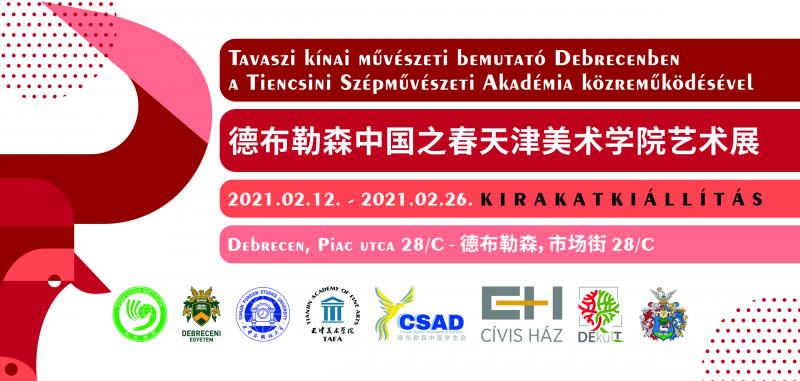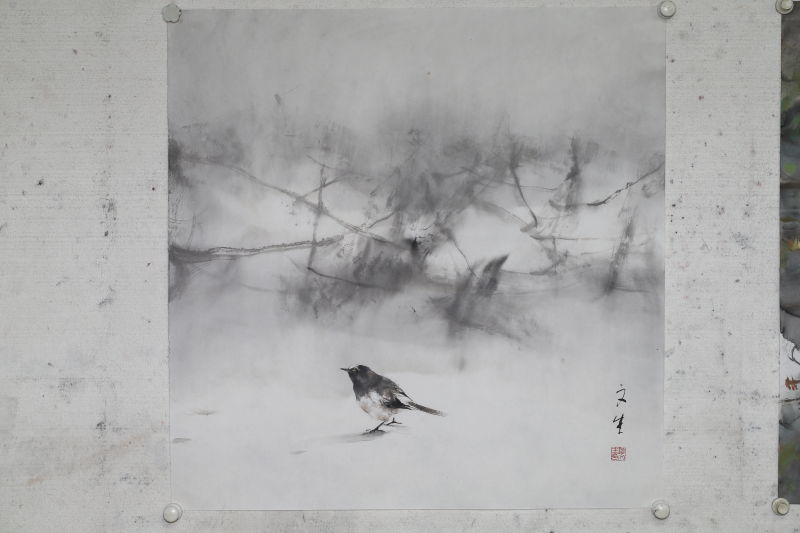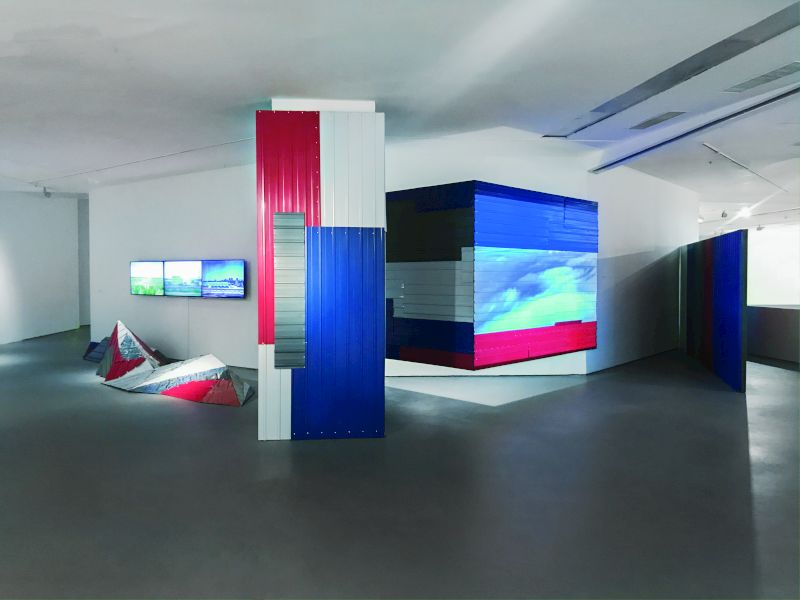"Chinese Spring in Hungary: Tianjin Academy of Fine Arts Teachers' Works Exhibition"

Exhibition: https://youtu.be/f0oOzWXQwXg
Brief Introduction of the Artists
Exhibition opening: February 12, 2021, 2 p.m.
ONLINE: https://www.facebook.com/events/122449683020976
Opened by: Dr. Róbert Keményfi, Dean of Faculty of Humanities of UD, Dr. Pál Csontos, Hungarian Director of the Confucius Institute at UD, Dr. Cui Xianjun, Chinese Director at the Confucius Institute at UD and Dr. István Puskás, Deputy Mayor of Debrecen
Available to view: February 12, 2021 - February 26, 2021.
Content Introduction

Tianjin Academy of Fine Arts (TAFA) is one of the nine most influential art schools in China and an important art education and research center in northern China. It is located in the center of Tianjin, the third largest city (whose municipality works directly under the central government) in China.
The exhibition "Chinese Spring in Hungary" has been organized by the Confucius Institute of the Faculty of Humanities at Debrecen University, Tianjin Foreign Studies University and the Municipal Government of Debrecen. The current exhibition of three generations of recent and outstanding works, a total of 39 artistic pieces, include traditional Chinese paintings, watercolor paintings, oil paintings, sculptures, calligraphy samples, wood blocks, wall paintings, animation and other genres. Its rich content and distinctive forms embody a concentrated reflection of contemporary Chinese artists’ creative explorations and unique styles. The exhibition will hopefully promote the artistic and cultural exchanges between China and Hungary and facilitate the inter-city cooperation and friendly exchanges between Tianjin and Debrecen.
Spring Festival – A Debrecen-based exhibition by instructors at Tianjin Academy of Fine Arts on the occasion of Chinese New Year.
Chinese painting, with a history of more than a thousand years, focuses on the symbiosis between people and nature. In the past, landscapes used to be mainly created on paper and silk with monochrome or decorative colors and meticulous brush strokes. Among contemporary artists, quite a few would continue to embrace this tradition, for which they also apply a calligraphy technique that combines the rules of genuine Chinese character drawing and painting with a brush. Even today, traditional landscape themes continue to preserve a few simple but salient components and motifs borrowed from everyday life, including hillsides with plants (Yu Jianshi, Lu Hongming, Duan Weimin, Chen Fuchun), ships (Shen Shihui), rivers, birds (Zhou Wusheng, Liu Wensheng), as well as plants and flowers in full blossom (Zhou Shilin, Jia Guangjian, Huo Chunyang). However, these landscapes are not necessarily the reflections of real-life originals. Rather, they would tend to mirror the inner spiritual and imaginary landscapes of the artists. All that is depicted through fabulous hills, mountains and bodies of water, symbolizes life, by covering which we can get from one point of departure to another; from birth to death, in order to start a new life in a different world. The landscapes used in the pieces created by these artists display a homey and cozy world, in which it is good to exist.

This contemporary reinterpretation of nature represents a proof of continuity in Chinese landscape art. Looking for new paths, the artists have complemented old themes and topics with the element of portraying human beings, a feature adopted from occidental culture. In the genre scenes, we can observe metropolitan Chinese citizens in urban environments, wearing western clothes and/or depicted in their homes furnished with western modern conveniences (Zhao Lihui, Zhen Zhi, Wu Xin, Wu Yuliang). We can also learn about the quotidian life outside cities from the scenes that remind us of postcards or snapshots from travelogues (Dong Kecheng). In these, in addition to the conventional rural lifestyle and its implements, 20th-century agricultural machinery and means of transportation, such as tractors, motorbikes and trucks, refer to a different level of civilization accessing the provincial Chinese settlements.
Besides applying a wide thematic variety, the artists have also burst the framework of previously available classic techniques by now. In addition to ink and watercolor, some of them use oil (Zheng Dai), and a variety of new artistic media is customary among those who have been influenced by novel artistic trends and tendencies infiltrating from Europe and North-America. Using the most diverse types of media and the most heterogeneous forms, they create experimental pieces by involving visual means of expression alien to traditional Chinese culture. Searching for new means of expression is an avant-garde process, which nonetheless passes down old traditions at the same time and in which the spatial representation of landscape, including installations and sculptures (Tan Xun, Jing Yumin), serves as an attempt to confer traditions to upcoming generations. In a similar fashion, media art (Zhang Meng) also seems to be applicable to validate the message inherent in Chinese philosophy to this very day. The images you will see on the monitor embedded in the shop-window installation demonstrate the vitality and survival of the prestigious Chinese traditions in landscape painting. The different styles and techniques make contemporary Chinese fine art varied and vivid: presenting to us side by side the calligraphic ink and watercolor painters, the examples of realistic oil paintings and the experimental media artists. The traditional genres here thrive together with new contemporary tendencies.
Sponsored by the Confucius Institute, Faculty of Humanities at the University of Debrecen, in collaboration with the municipal government of Debrecen, Tianjin Foreign Studies University and Tianjin Academy of Fine Arts artists, "Chinese Spring Exhibition" fully demonstrates the development of various art forms and their unique charm, but also visually illustrates this point: the combination of the east and the west as well as the traditional and the modern will live absorbed in the memory of this spring as long as it is beautiful.